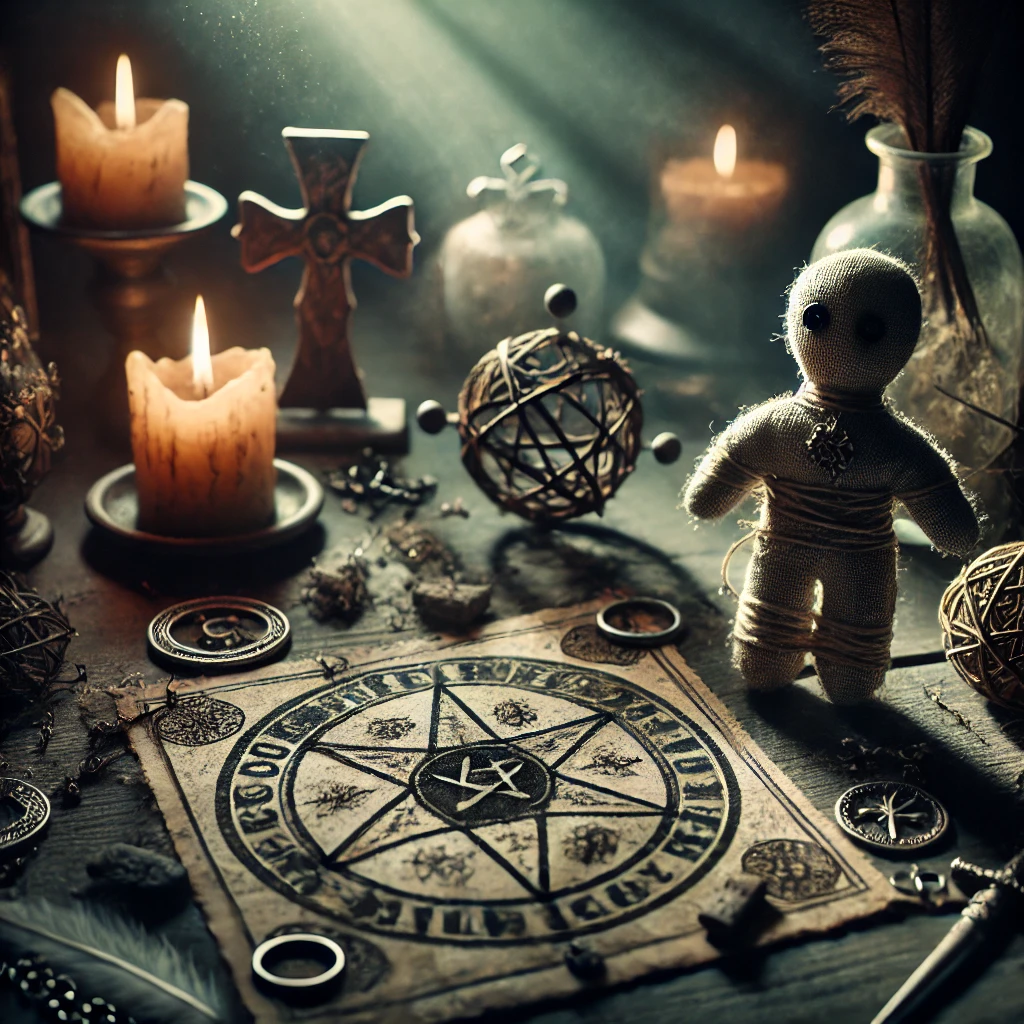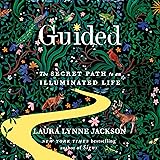When people hear the word “Voodoo,” one of the first images that often comes to mind is the idea of Voodoo curses—dark magic rituals designed to bring harm, misfortune, or even death to an enemy. Thanks to Hollywood movies, TV shows, and popular culture, the notion of Voodoo curses has become deeply ingrained in the public consciousness. But how much of this is true? Do Voodoo curses really exist, or is it just a myth perpetuated by sensationalized portrayals?
In this article, we’ll explore the truth about Voodoo curses, where the idea comes from, what Voodoo practitioners really believe, and whether curses play a role in authentic Voodoo traditions.
SaktopDeco 40 Counts Black Skull Mini Plastic Skull Heads Decor Halloween Skeleton Head for Crafts Bar Home Table Party Decorations
$8.58 (as of December 25, 2025 18:12 GMT +00:00 - More infoProduct prices and availability are accurate as of the date/time indicated and are subject to change. Any price and availability information displayed on [relevant Amazon Site(s), as applicable] at the time of purchase will apply to the purchase of this product.)The Myth of Voodoo Curses: Hollywood vs. Reality
The idea of Voodoo curses has been popularized by movies, books, and television, often portraying Voodoo practitioners as people wielding dark magic to curse others. This portrayal typically includes images of Voodoo dolls being stuck with pins, people suffering mysterious illnesses or accidents, and rituals designed to invoke spirits for evil purposes. However, these depictions are far from the reality of what Voodoo truly is.
Fact:
In authentic Voodoo practice, curses are not a central focus. Voodoo is a religion that emphasizes healing, protection, and maintaining harmony between the human and spiritual realms. The idea of Voodoo being used primarily for harm is largely a myth created by outsiders who misunderstood the religion.
While it is true that Voodoo rituals can involve asking the spirits (known as lwa) for help in various aspects of life, including protection and justice, most Voodoo practitioners focus on positive outcomes like healing, prosperity, and spiritual balance.
What is a Voodoo Curse?
The idea of a “Voodoo curse” typically refers to a spell or ritual performed with the intent to bring harm, misfortune, or suffering to someone. In pop culture, this is often symbolized by the infamous Voodoo doll, a small figurine that is believed to represent a specific person. By manipulating the doll—usually by sticking pins into it or binding it—people believe that they can inflict physical or emotional harm on the individual it represents.
However, the reality is much more nuanced.
Voodoo Dolls: Myth vs. Reality
The concept of using Voodoo dolls for harmful purposes is one of the most enduring myths about the religion. In authentic Voodoo practice, dolls (often called poppets) are not typically used for curses. Instead, they serve as a symbolic representation of a person, often in rituals focused on healing, protection, or attracting positive energy.
- Reality: Voodoo dolls are more likely to be used in positive ways, such as helping someone recover from illness or attract love. The pins placed in the doll are often symbolic, representing energy points where the practitioner wants to focus healing or spiritual attention, rather than being a method of causing pain or suffering.
Fact:
Voodoo dolls are not primarily used for harmful curses. In most cases, they are employed in rituals to bring about positive changes, such as healing, protection, or love.
The Ethical Code in Voodoo: Balance and Consequences
Voodoo is governed by an ethical principle that emphasizes balance. What you send out into the world—whether good or bad—will eventually come back to you. This is known as the law of reciprocity or karma. Because of this belief, most ethical Voodoo practitioners avoid using their spiritual power to harm others, as they believe that doing so could result in negative consequences for themselves.
The Role of Spirits (Lwa) in Justice and Protection
In Voodoo, the lwa (spirits) are powerful intermediaries between humans and the divine. Practitioners often call upon these spirits for help with protection, healing, guidance, or resolving problems in their lives. However, the spirits are not typically invoked for harmful purposes. Instead, the lwa are seen as forces of balance and justice.
- Seeking Justice, Not Revenge: While a practitioner might ask a lwa for justice in cases of wrongdoing, this is not the same as asking for a curse to harm someone. Instead, the focus is on setting things right—ensuring that fairness and balance are restored. The spirits may take action in ways that are beyond human control, but this is not equivalent to casting a “curse.”
Fact:
In Voodoo, practitioners are more likely to seek protection and justice from the spirits rather than invoking them to harm others. The ethical framework of Voodoo discourages the use of spiritual power for malicious purposes.
The Psychological Impact of Belief in Curses
One of the reasons why the idea of Voodoo curses persists is the psychological power of belief. For people who believe that they are the target of a curse, the mere thought of being cursed can cause stress, anxiety, and even physical symptoms. This phenomenon is often referred to as the nocebo effect—the opposite of the placebo effect—where negative expectations lead to real, negative outcomes.
The Power of Suggestion
Belief in curses can be incredibly powerful. When someone truly believes that they have been cursed, their mind and body can begin to manifest symptoms of illness or misfortune. This can create a self-fulfilling prophecy, where the individual’s belief in the curse causes them to experience the very misfortunes they fear.
- Example: Someone who believes they have been cursed may start to experience physical symptoms like headaches, fatigue, or anxiety. They may also become hyper-aware of any negative events in their life, interpreting ordinary setbacks as proof that the curse is real.
Fact:
The power of belief can have real psychological and physical effects. People who believe they have been cursed may experience stress and anxiety that manifest as physical symptoms, even if no actual curse has been cast.
Thanosis
$19.95 (as of December 25, 2025 18:12 GMT +00:00 - More infoProduct prices and availability are accurate as of the date/time indicated and are subject to change. Any price and availability information displayed on [relevant Amazon Site(s), as applicable] at the time of purchase will apply to the purchase of this product.)Do Voodoo Curses Actually Exist?
While it is possible for a Voodoo practitioner to attempt to cast a curse, the question remains: do these curses actually work in the way that movies and pop culture suggest? The answer depends largely on the beliefs of the individuals involved.
The Spiritual Perspective
From a Voodoo practitioner’s perspective, the success of a curse or blessing depends on many factors, including the strength of the practitioner’s connection to the spirits, the intent behind the ritual, and the belief of the person involved. However, most ethical practitioners avoid casting harmful spells, focusing instead on healing and protection.
- Spiritual Power: Some practitioners believe that, in rare cases, curses can work if the person casting the curse has a strong connection to the spirits and the person receiving the curse believes in its power. However, this is not a common practice, and most Voodoo rituals are focused on positive outcomes.
The Skeptical Perspective
From a skeptical or scientific point of view, there is no evidence to suggest that Voodoo curses—or any curses—have a supernatural effect. Any negative outcomes experienced by someone who believes they are cursed can often be attributed to psychological factors, such as the nocebo effect or confirmation bias.
Fact:
While belief in curses can be powerful, there is no scientific evidence to support the existence of supernatural curses. Most negative experiences associated with curses are likely the result of psychological factors rather than spiritual intervention.
How to Protect Yourself from Negative Energy in Voodoo
If you are concerned about negative energy or curses—whether in the context of Voodoo or any other spiritual practice—it’s important to focus on maintaining your own spiritual and emotional well-being. Here are some common practices used by Voodoo practitioners to protect themselves from harm:
1. Spiritual Cleansing
Spiritual cleansing rituals, such as taking a herbal bath or using spiritual colognes like Florida Water, are common in Voodoo. These practices are designed to remove negative energy and protect the individual from harm.
2. Protective Amulets and Charms
In Voodoo, gris-gris bags—small pouches filled with protective herbs, stones, and other items—are often used to shield individuals from negative energy. Wearing a protective charm or carrying a gris-gris bag is a way to invoke the protection of the spirits.
3. Offerings and Prayers
Making regular offerings to the spirits and ancestors is a way to maintain positive energy and ensure protection. Practitioners often place offerings of food, drink, or flowers on altars dedicated to the spirits they work with.
Fact:
In Voodoo, protective rituals and practices are more commonly used than harmful curses. Spiritual cleansing, protective charms, and offerings are ways to ensure balance and ward off negativity.
Guided: The Secret Path to an Illuminated Life
$17.33 (as of December 25, 2025 18:12 GMT +00:00 - More infoProduct prices and availability are accurate as of the date/time indicated and are subject to change. Any price and availability information displayed on [relevant Amazon Site(s), as applicable] at the time of purchase will apply to the purchase of this product.)The Truth About Voodoo Curses
So, do Voodoo curses exist? The answer is complex. While the idea of curses has been sensationalized by popular culture, most authentic Voodoo practices focus on healing, protection, and maintaining spiritual balance. While some practitioners may believe in the possibility of curses, ethical Voodoo emphasizes the law of reciprocity—what you send out into the world will return to you.
Ultimately, the belief in curses can have a powerful psychological impact, but there is little evidence to suggest that supernatural curses work in the way they are portrayed in movies and TV shows. Instead, Voodoo practitioners are more likely to focus on positive rituals that promote well-being, protection, and spiritual harmony.
Related Articles
- Voodoo Priests and Priestesses: Guardians of Tradition or Agents of Magic?
- Voodoo as a Force for Good: Misunderstood Spirituality
- Do Voodoo Curses Exist? What You Should Know
- The Influence of African Voodoo on Modern Practices
- Is Voodoo Legal? Understanding the Rights of Voodoo Practitioners
More from This Category
- The Truth About Voodoo Rituals: What Really Happens During a Ceremony?
- How Voodoo Heals: The Spiritual and Physical Aspects of Voodoo Healing
- Voodoo Spells: What They Really Mean and How They Work
- The Role of Spirits in Voodoo: Fact or Fiction?
- Voodoo and Christianity: Myth or Harmony?
Additional Resources
- Voodoo in Hollywood: How Movies Get It Wrong
- The Difference Between Haitian Vodou and Louisiana Voodoo
- Voodoo Dolls: Myth vs. Reality
- Is Voodoo Evil? The Truth Behind the Stereotypes
- Debunking Common Voodoo Myths: Separating Fact from Fiction



